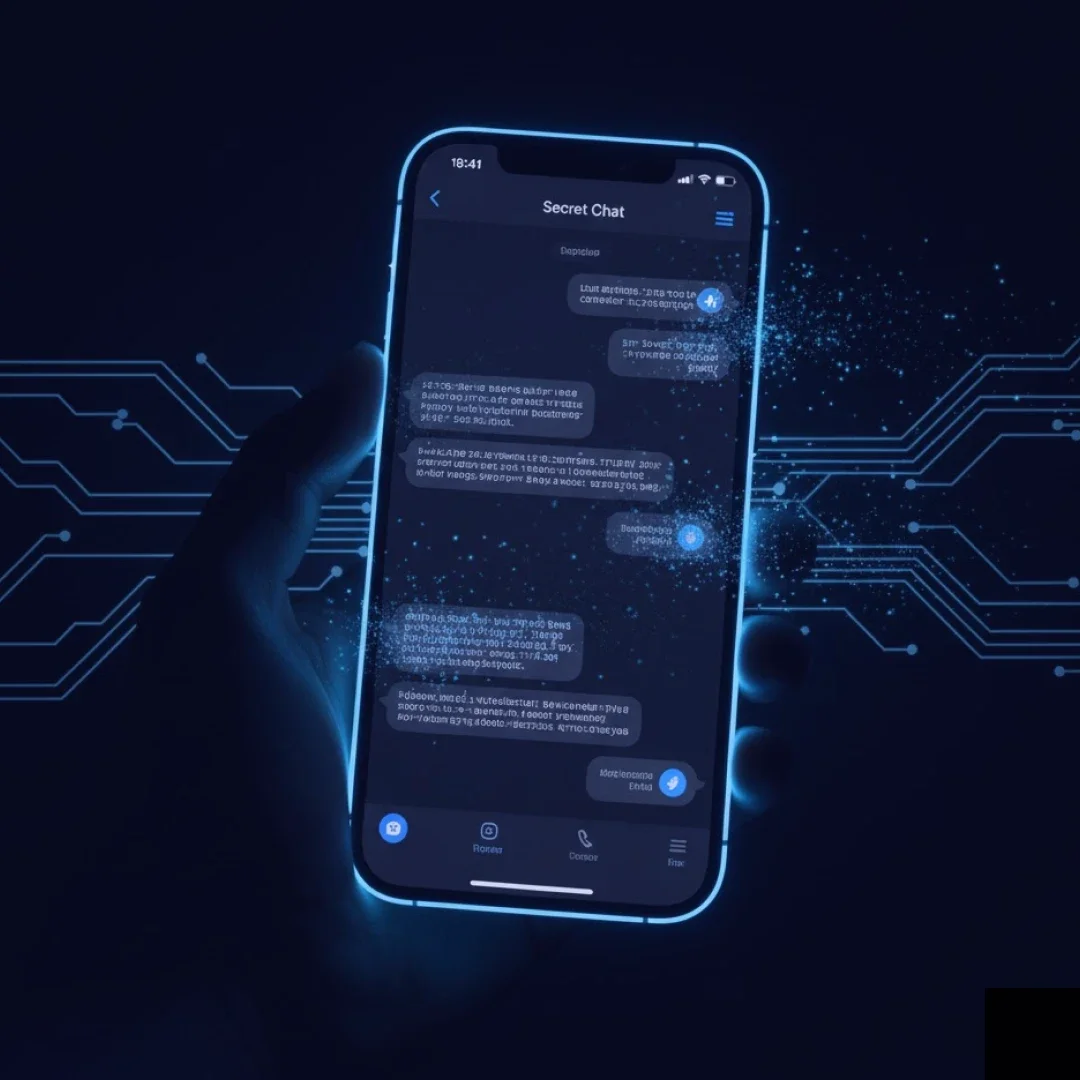

A private messenger with nothing superfluous. And no one superfluous either.
Many years ago, when privacy in messengers was not yet a trend, we developed a private chat for a client: a completely closed application for communication.

There was no registration, email verification, or forgot password button. Because if you weren’t invited, you wouldn’t even know the app existed.
At that time, we did not know that in a few years Apple, Meta, Google, and dozens of others would start talking about end-to-end encryption and implementing it in their solutions. We simply received an order for 100% privacy and got down to work on the development.
Everything should work as if you had come to the person yourself, handed over the letter from hand to hand without a postman, witnesses, or cameras.
But online.
That is, the user downloaded the application via a link received by email or SMS, chose a fictitious nickname, and sent it to the person they wanted to contact.
That’s all.
That was the only way to get into the circle of your own kind.
Why is this necessary? In some contexts, the very fact of communication can be a problem. Our app not only encrypted messages and calls, but also ensured that the very fact of communication was concealed as much as possible.
Was there a server part? Yes, but very small, and only for the first second. The server performed one function: to help two devices find each other’s IP addresses. After that, the connection switched to pure peer-to-peer: messages, videos, and files were exchanged without being transferred through third-party servers. Nothing was stored, all traffic went directly. The interface was also minimalistic and straightforward, in the style of mysterious restraint.
What was in the app:
- chat;
- calls and video calls;
- file transfer;
- automatic encryption of everything without exception;
- no history on the server;
- entry lock code (if the phone is lost, the data is inaccessible).
And one more extremely important feature.
Encryption often becomes useless when a device is connected to a public network. Our app checked this, and if the network was unreliable, the system warned the user and highlighted it in red. In other words, the app had a built-in risk radar. After all, even the best encryption won’t help if traffic is being leaked somewhere in a cafe via Man-in-the-Middle: a classic scheme where an attacker becomes an intermediary between two devices, intercepting or altering messages before they reach their destination.
The app was not published in the App Store. Why? Because as soon as an app becomes publicly available, it can be extracted, decompiled, and reverse engineered to find vulnerabilities or copy logic. And the client’s request was for uncompromising reliability.
In addition, we also engaged a third-party cybersecurity company to verify the concept’s information security level. Various scenarios were modeled, and as a result, we created not just a reliable and secure messenger, but a system that leaves no digital footprint.
Our customer received a closed environment with no information leaks and resistance to hacking. They also gained complete control over access to the system.
It was one of our first and most interesting cases, and the main principles of IWIS information protection were already formed back then. Today, we continue to create diverse and interesting solutions: from mobile applications to cloud services. But regardless of the form, we always start with security.
Cybersecurity by design – Security should not be added at the end of development. It is designed and incorporated into the project architecture from the very beginning.
As for the app… We don’t know how many people are using it right now. And that’s great, because that’s how this messenger was conceived from the very beginning: without unnecessary people and without digital traces.
This is an example of what true privacy should look like.
Interesting materials for you


Web development trends for 2025: what to consider today
Business process automation: 5 things to...
Read more